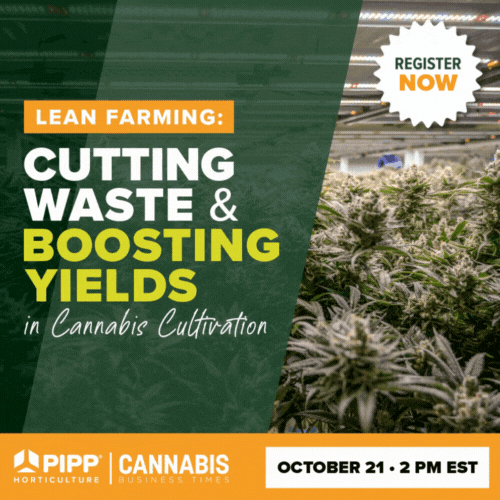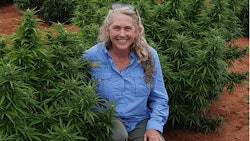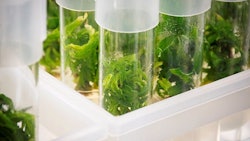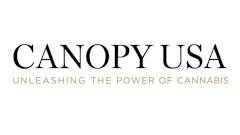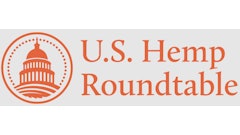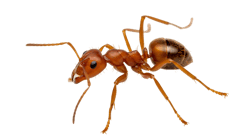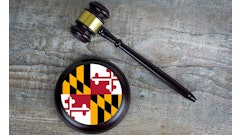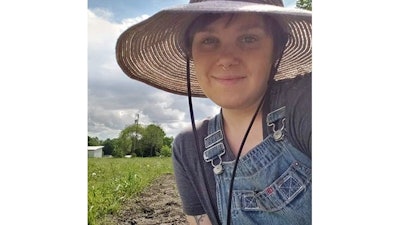
Breaking into a brand new industry is no easy feat. It requires resilience, patience, experimentation and new ideas.
Rachel Berry, the founder and CEO of the Illinois Hemp Growers Association, is bringing those qualities with her into this growing season, where she’s tackling a brand new crop on her 13-acre farm in Princeton: hemp for fiber.
While growing hemp for cannabinoids, primarily cannabidiol (CBD), remains the most popular option for hemp farmers in 2020, small pockets of farmers are popping up across the U.S. with plans to plant and harvest hemp for its stalk.
They face numerous challenges, including a disjointed supply chain, a lack of local processors and underdeveloped end markets. But Berry has plans to experiment with new solutions that may just alleviate some of those issues.
“All the hurd from the [hemp], we want to use to build with here on our farm,” Berry says.
Switch to Fiber
Hemp grown for fiber is leggier than its bushy cannabinoid-rich cousin. It also reaps not one, but two usable products: the bast and the hurd. The bast portion of hemp, which is the outer portion that wraps around the stalk, is what many refer to as the “fiber” and can be used primarily for textiles and paper. Meanwhile, the hurd on the inside of the stalk is a type of softwood and has numerous applications, including animal bedding, construction materials and more.
Berry has one season of experience under her belt growing hemp for CBD. She and her husband, Chris, are first-generation farmers from Chicago who had an opportunity to switch lifestyles with his family, who wanted to sell their farm to move to the city nearly a decade ago. Before growing hemp, the Berrys mainly grew vegetables on their farm, where they implement regenerative practices.
But since she decided to be a farmer, Rachel Berry’s true focus has always been on hemp for fiber.
“Five to six years into living here and homesteading, I just said, ‘I want to be a farmer. I don’t just want to do gardening, I want to farm something. But what can I farm that I can feel good about?’ … I stumbled upon hemp and fell down that rabbit hole in 2016,” Rachel Berry says, explaining that she discovered the numerous benefits hemp grown for fiber offers. “My love for hemp was always about fiber.”
This year, Rachel Berry decided to pursue it. She sectioned off half an acre of her farm for fibrous hemp, planting seeds she purchased from Ukraine about an inch apart in 18-inch rows. Hemp grown for fiber is treated more like a row crop and known to be far less laborious than growing hemp for CBD. “It doesn’t require as much tender love and care,” Rachel Berry says.
For this year, Rachel Berry’s pursuit in hemp is purely experimental. She, along with other farmers across the country interested in growing hemp for fiber, are currently in a research and development phase to discover which hemp fiber genetics yield the best results. Many have sourced seeds from overseas, including China and Europe.
“We’re just doing this at a scale that makes sense for us,” Rachel Berry says.
Creative Solutions
For this year, Rachel Berry’s goal isn’t to be profitable. It’s to see what she can do with artisanally grown hemp for fiber.
Rachel Berry says she has been in touch with someone who is interested in buying her hemp fiber to blend with wool. Finding a buyer is a huge hurdle for all hemp farmers, but especially for those growing for fiber, as many of its end markets in the U.S. are still in their infancies.
But Rachel Berry has much bigger plans for hemp fiber beyond just growing it and selling it to a buyer.
Chris Berry is a millwright and carpenter, so Rachel Berry says the two plan on building their own small-scale decorticator right on the farm. “We did a lot of research looking through historical records and European records. We found a decorticator that’s 5 feet long and 5 feet off the ground,” Rachel Berry says. “We’re going to put our own spin on the plans we saw.”
Having a decorticator on-site will be another large advantage for the Berrys. While decorticators are sprouting up across the U.S., transportation is a huge barrier in getting the hemp to them, as the cost of sending it long distances often outweighs its value.
And with the hurd left over once the decorticator separates it from the bast, Rachel Berry intends to put what she’s learned over the years to good use. She says she’s taken workshops on constructing with hemp hurd, which, when bound with lime, forms a substance called “hempcrete” that can be used to build structures, including houses.
Rachel Berry plans to use hurd from her harvest to construct either a farm stand or a clubhouse for the Illinois Hemp Growers Association to meet in.
“We’re … going for something that will be the first hemp lime construction in the state, so we’re pretty psyched about that,” Rachel Berry says. “We want to invite people to come see this. Affordable housing is a big issue in Chicago and many other places in the state, so demonstrating that hemp fiber can be grown, processed, manufactured and built with locally—we need to shout that from the rooftops."

